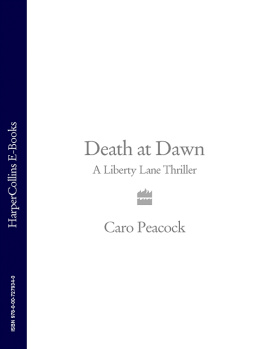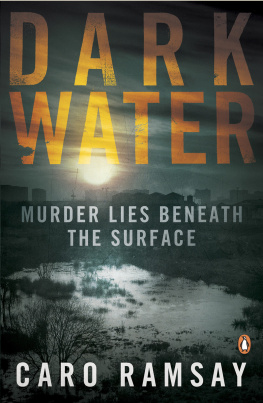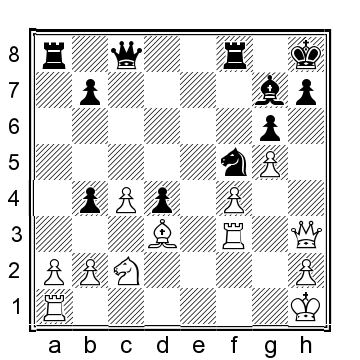
A) 6.0-0 86
B) 6.c3 N c6 7.0-0 87
B1) 7...cxd4 88
Game 6 Nayhebaver Schandorff 90
B2) 7... B g6! 93
C) 6. B e3 cxd4 7. N xd4 N e7 96
C1) 8. B g5 99
C2) 8.c4 N bc6 100
C21) 9. N c3 100
C22) 9. Q a4 101
C3) 8. N d2 105
C4) 8.0-0! N bc6 9. B b5! a6 10. B xc6 bxc6 11.c4 Q d7 107
C41) 12.cxd5 108
C42) 12. N c3 dxc4 109
C421) 13. N xf5 109
C422) 13. N a4 111
This is Ground Control to Major Tom
Youve really made the grade
And the papers want to know whose shirts you wear
Now its time to leave the capsule if you dare
David Bowie Space Oddity
1.e4 c6 2.d4 d5 3.e5 B f5 4. N f3 e6 5. B e2 c5
We will analyse A) 6.0-0 and B) 6.c3, before concentrating on the big main line of C) 6. B e3.
6.c4
This is a thematic break. Here it is a little premature though, and doesnt pose Black any difficulties.
6...dxc4 7. N c3
7. B xc4 N c6 8. B e3 cxd4 9. N xd4 can be met by 9... B b4 10. N c3 N ge7 and Black is fine.
7... N c6 8.d5
This is thematic, but White is not ready for such active, forcing operations.
8...exd5 9. N xd5 N ge7! 10. B xc4 B e4!
An instructive move. The light-squared bishop plays a vital role in many of these variations. Black is much better already, for example:
11. N xe7 Q xd1 12. K xd1 B xe7 13. R e1?! 0-0-0 14. K e2
14... B xf3
14...b5! N 15. B xf7 B d3 16. K e3 R hf8 is suggested by the computer. Play may continue 17. B e6 K c7 18.a3 c4+ with the deadly threat of ... B c5.
15. K xf3 N d4 16. K g3 N c2
Black won material in Matinian Khairullin, Khanty-Mansiysk 2013.
A) 6.0-0
It is natural to get the king to safety.
6... N c6
White has to decide how to meet the pressure against his centre. The only independent option is:
7.c4
But once again Black is prepared to face it.
The more popular 7. B e3 and 7.c3 transpose to other variations.
7...dxc4 8. B e3
After 8. B xc4 cxd4 9. B b5 B c5 Black was at least equal in Hauge A. Zhigalko, Warsaw 2013.
8...cxd4 9. N xd4 N xd4 10. B xd4 N e7 11. B xc4
11. Q a4 N c6 12. R d1 is nothing for White after 12... B d3!= as seen in Zubarev Sumets, Metz 2012. Still, this may have been his best bet, as the text move gives Black a pleasant choice.
11...a6!
Black has achieved excellent results with this simple move, which prevents B b5 and intends ... N c6 next.
11... N c6!? 12. B b5 B e7 13. B xc6 bxc6 14. Q a4 0-0 is also fine, and Black can look for ways to complicate the play. For instance, 15. R d1 c5!? was a nice idea seen in Radjabov Seirawan, Berlin (rapid) 2015, and if 16. B xc5 B xc5 17. R xd8 R axd8 Black has more than sufficient compensation for the queen, due to his two powerful bishops and the possibility to penetrate with the rook on the d-file.
B) 6.c3
This is a sound move which secures the centre.
6... N c6
7.0-0
7.a3 is a typical move in the Advance French, and here too it makes sense to take control over the b4-square. Black can do a lot of things, but simple and instructive is: 7...cxd4 8.cxd4 N ge7 9.0-0 N c8! Black uses the c8-square in exemplary fashion and shows that there is enough room to get the pieces out in a harmonious way. A top womens game went: 10. N c3 B e7 11. B e3 N b6 12.b3 0-0 13. Q d2 R c8 14. R fc1
Gaponenko Goryachkina, St Petersburg 2018. Here I would like to propose: 14... N a5!? N 15. Q b2 a6= Black can improve her position with ...h6 and then think about ... R c7 to double on the c-file.
After the text move we will analyse B1) 7...cxd4, which is a perfectly respectable move. Then I will show you why I believe B2) 7... B g6! to be slightly more precise.
Black can also consider 7... B g4!? in order to exert extra pressure against d4. To be honest, I get the feeling that White should be slightly better somehow, but it is not easy to prove anything for him. The analytical details are not particularly relevant, as I am analysing two options already. However, the fact that Black can play a slightly suboptimal move without having to suffer for it shows that Whites c2-c3 set-ups are generally not too threatening unlike the 6. B e3 main line, where White develops more quickly and keeps the option of c2-c4.
B1) 7...cxd4 8. N xd4!
8.cxd4 N ge7 9.a3 N c8! is nothing special for White, as has already been established in the note on 6.a3.
8... N ge7
8... N xd4 9.cxd4 N e7 is solid, although Whites extra space counts for something; I tried 8... B g6!? in a recent game, preserving the bishop at the cost of a tempo. See Game 6.
9. N xf5 N xf5 10. B d3 g6
White has the bishop pair and the one on d3 is especially good. However, it is currently blocked by the knight on f5 which is secured by the g6-pawn, meaning that B xf5 is rarely an attractive option. Furthermore, White has to keep an eye out for the e5-pawn.
11. Q e2
11. R e1 B g7 12.f4 allows 12...d4!? with good counterplay. After 13. Q f3 0-0 14. N d2 as in S. Zhigalko Rozum, Kocaeli 2017, Black can already fight for the initiative with: 14...f6! N 15.exf6 B xf6
11. B xf5!? gxf5 12. B e3 of course is possible. Black can probably take the bait with 12... N xe5!? (although developing moves such as 12... Q h4 and 12... R g8 are also fine) 13. B d4 f6 and get away with it.
11... B g7 12.f4 0-0 13. N d2
Planning N f3 with a harmonious position.
The time is still not quite right for active operations:
13. K h1 f6!?
A key move in this line, but we must anticipate a forcing sequence:
14.g4 N fe7 15.exf6 R xf6 16.g5 R f8 17. Q xe6 K h8
White has won a pawn but the price was high, positionally speaking. Blacks position has proven fine in correspondence praxis, for instance:
18. Q h3
18. N d2 d4! 19. Q h3 N f5 20. N e4 dxc3 21.bxc3 N b4! 22. N f6! B xf6 23. B xf5 Q d5 24. Q f3 Q xf5 25.gxf6 N d5 was agreed drawn a few moves later in Schroeder Holroyd, corr. 2015.
18...d4! 19.c4 N f5 20. B d2 Q c8! 21. R f3 a5 22. N a3 N b4 23. B xb4 axb4 24. N c2
24... Q c5
Black has good compensation for the pawn.
Next page




















